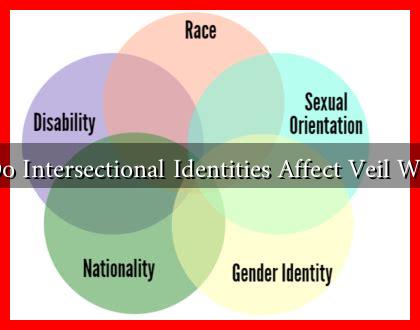-
Table of Contents
How Do Intersectional Identities Affect Veil Wearing?
The act of wearing a veil is a deeply personal choice influenced by a myriad of factors, including cultural, religious, and social contexts. However, the intersectionality of identities—such as race, gender, class, and sexuality—plays a significant role in shaping the experiences and perceptions of those who choose to wear a veil. This article explores how these intersecting identities affect veil-wearing practices, the societal implications, and the personal narratives that emerge from this complex interplay.
Understanding Intersectionality
Intersectionality, a term coined by Kimberlé Crenshaw in the late 1980s, refers to the way different social identities overlap and interact to create unique experiences of discrimination or privilege. In the context of veil-wearing, intersectionality can illuminate how various factors influence a person’s decision to wear a veil and how they are perceived by society.
The Role of Cultural Identity
Cultural identity significantly impacts the decision to wear a veil. For many women from Muslim backgrounds, the veil is a symbol of faith and cultural heritage. However, the experience of wearing a veil can differ widely based on cultural context:
- Middle Eastern Context: In many Middle Eastern countries, wearing a veil is a common practice and often seen as a cultural norm. Women may feel empowered by their choice to wear a hijab or niqab, viewing it as a connection to their heritage.
- Western Context: In Western countries, Muslim women who wear a veil may face discrimination or stereotyping. The veil can become a focal point for discussions about Islamophobia and cultural misunderstanding.
Gender and Veil-Wearing
Gender plays a crucial role in the discourse surrounding veil-wearing. Women are often the primary subjects of discussions about veiling, which can lead to a range of experiences:
- Empowerment vs. Oppression: For some women, wearing a veil is an act of empowerment, allowing them to assert their identity and autonomy. Conversely, others may feel pressured to wear a veil due to societal or familial expectations.
- Feminist Perspectives: Feminist scholars are divided on the issue of veiling. Some argue that it is a form of oppression, while others contend that it can be a choice that empowers women.
Class and Economic Factors
Class and economic status also intersect with the decision to wear a veil. Access to resources can influence how women experience veiling:
- Affluence and Choice: Women from affluent backgrounds may have more freedom to choose how they express their identity through veiling, including the ability to purchase high-quality fabrics and styles.
- Working-Class Experiences: For working-class women, the veil may be a practical choice that aligns with their cultural identity, but it can also lead to economic disadvantages, such as discrimination in the workplace.
Case Studies and Personal Narratives
To illustrate the impact of intersectional identities on veil-wearing, consider the following case studies:
- Case Study 1: A young Muslim woman in France who wears a hijab faces legal restrictions and societal backlash, highlighting the intersection of race, religion, and gender in a secular state.
- Case Study 2: An African American Muslim woman who wears a veil discusses her experiences of racism and sexism, emphasizing how her racial identity complicates her relationship with her faith and cultural practices.
Statistics and Societal Implications
Statistics reveal the challenges faced by women who wear veils:
- According to a 2017 study by the Pew Research Center, 62% of Muslim women in Western countries reported experiencing discrimination due to their religious attire.
- A 2020 report from the Institute for Social Policy and Understanding found that Muslim women who wear hijabs are more likely to experience workplace discrimination compared to those who do not.
Conclusion
The decision to wear a veil is not merely a matter of personal choice; it is deeply intertwined with the complexities of intersectional identities. Cultural, gender, and economic factors all play a role in shaping the experiences of women who choose to wear a veil. Understanding these dynamics is crucial for fostering a more inclusive society that respects individual choices while addressing the broader societal implications of veiling practices. As we continue to engage in discussions about identity and expression, it is essential to recognize the diverse narratives that emerge from the intersection of various identities.
For further reading on intersectionality and its implications, you can explore resources from the American Association of University Women.

